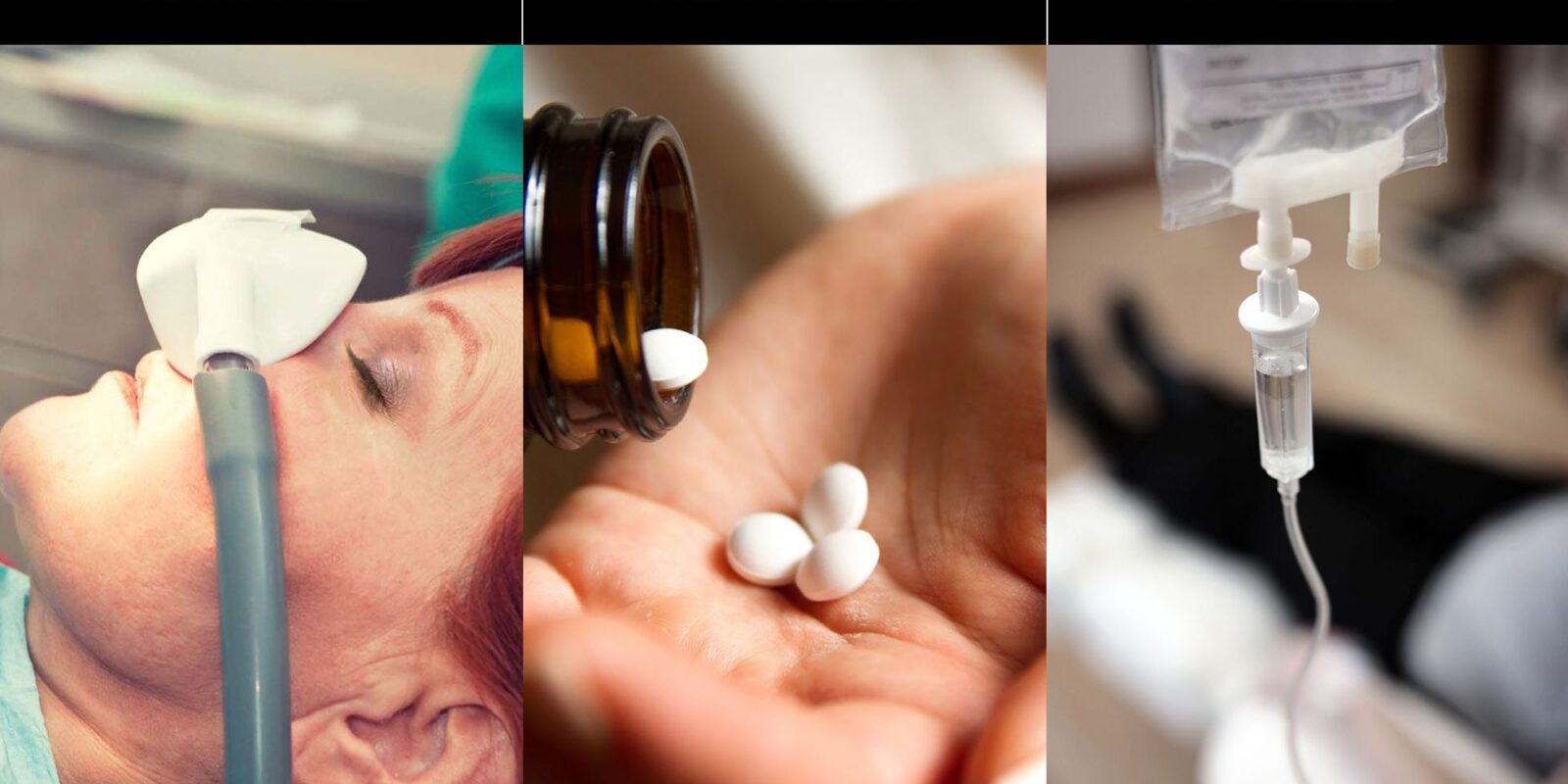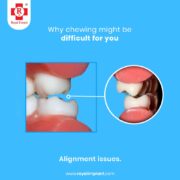An unsung hero, an artist working in the shadows, presides over the delicate dance between dental pain and numbness in the dimly illuminated theatre of life, in which health is the principal performer. This masterful musician is none other than anaesthesia, a subtle power that silences the world of pain and permits healers to work their magic without upsetting patients. With the help of Dr. Chirag Chamria of Royal Dental Clinics, we set out on a journey today to explore the intent and complex setup of this enigmatic art form.
Role of Anesthesia in Dentistry
Patient Comfort and Anxiety
In the field of dentistry, people may experience varied degrees of discomfort and anxiety when they hear the term “dental chair.” Anesthesia plays a critical role in pain management in making this experience tolerable—even, dare we say, comfortable.
Our tour guide through the complexities of dentistry, Dr. Chamria, highlights that patient comfort is an essential component of successful dental procedures rather than just a luxury. Anxiety can be a major obstacle to maintaining good oral health because it is frequently linked to dental visits. Anesthesia, particularly local anesthesia, numbs pain receptors and gives patients a feeling of relief. It is a calming balm.
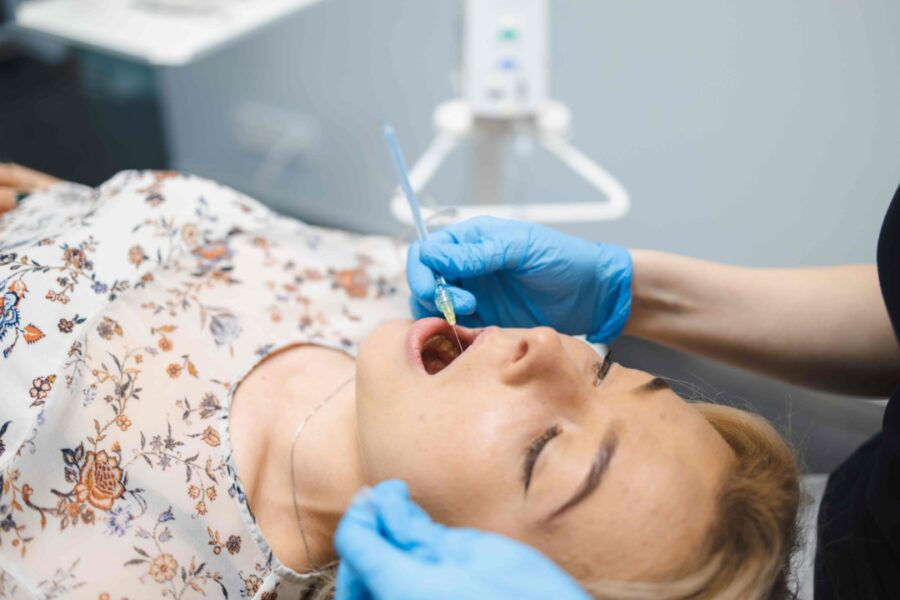
Because they are aware of the psychological effects of dental operations, dentists carefully prescribe anesthesia to patients in order to reduce anxiety. Reducing the anxiety that frequently accompanies a dental appointment is just as important as numbing physical discomfort; this way, patients can concentrate on preserving their oral health without needless worry.
Types of Dental Pain
Dental pain is a multifaceted experience that requires a customized response due to its many masks. Dr. Chamria clarifies the complex relationship between dental pain and its various manifestations, which can range from immediate, intense discomfort to dull, aching pain. Because local anesthesia targets the problematic location directly and provides relief without affecting the entire body, it plays a crucial role in addressing these various types of pain.
Anesthesia is carefully chosen to meet the degree and nature of the dental procedure, whether it be the evacuation of a problematic wisdom tooth or a regular cleaning. Because of Dr. Chamria’s experience, the proper anesthetic type and dosage are chosen, guaranteeing not only pain relief but also an exact and effective intervention.
Patient Cooperation | Dental Anaesthesia
Addressing Fear and Phobia
Many patients actually struggle with dental procedure anxiety. Compassionately, Dr. Chamria understands how important it is to confront this fear head-on. Anesthesia serves a purpose beyond just treating physical pain; it can also be a powerful weapon for breaking down psychological barriers that prevent patients from cooperating.

A delicate touch is commonly used to give local anesthesia, which acts as a bridge between anxious patients and the dentist chair. When the treated area is well numbed, patients feel detached from the process, which reduces anxiety and promotes a more cooperative attitude.
Enhancing Treatment Efficiency
Precision and quickness are equally important components of dental treatment efficiency. To achieve this efficiency, patient participation is essential, and anesthesia is a key factor in encouraging it.
A patient who is at ease and not in pain is more likely to participate during operations, which allows dental specialists to work precisely and intently, according to Dr. Chamria. Anaesthesia administered based on the patient’s needs guarantees a more efficient dental team workflow.
It reduces disruptions brought on by discomfort or patient anxiety, enabling quicker and more efficient treatments. Thus, anesthesia plays a part in dentistry that goes beyond just relieving pain; rather, it actively enhances the effectiveness and success of dental procedures as a whole.
Understand the Purpose of Anaesthesia in Dentistry
Routine Check-ups
In dentistry, anesthetics serve considerably more purposes than only reducing pain. Our tour guide through the complexities of dental treatment, Dr. Chamria, highlights the significance of customizing anesthetics to the unique requirements of different dental procedures.
During regular examinations, where preventative care is the main focus, judicious use of local anesthetics guarantees that discomfort is reduced without impairing the patient’s capacity to carry out daily activities after the visit. The idea here is to produce a localized numbing effect rather than induce total unconsciousness.
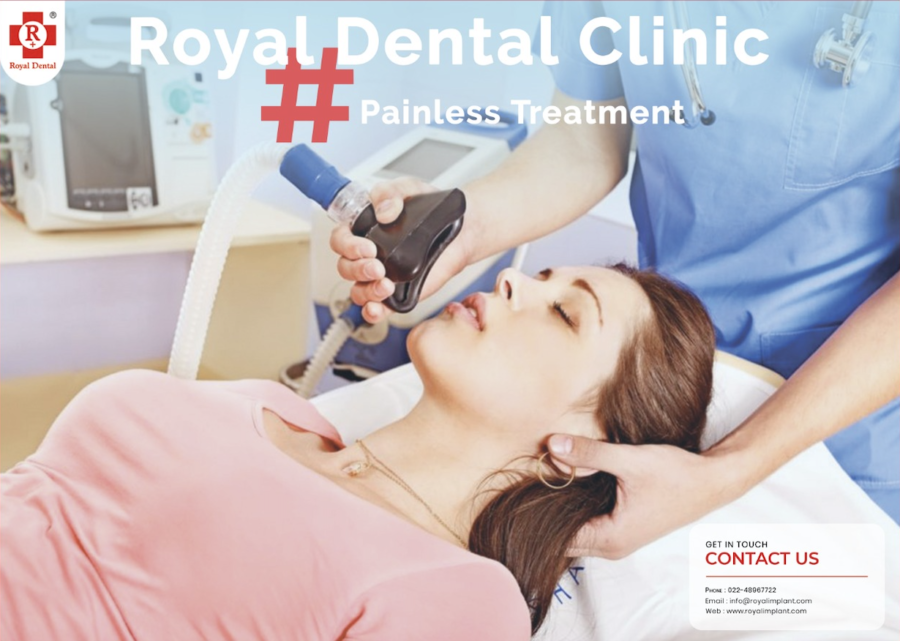
In addition to encouraging a positive attitude about routine dental appointments, Dr. Chamria’s approach also understands the importance of patient comfort even in seemingly routine operations, which in turn promotes consistent oral health practices.
Complex Surgical Interventions
Anaesthesia function becomes more sophisticated when the dental stage is converted into a surgical theater for more involved interventions. The subtleties of customizing anesthetics for operations like oral surgery or implant placements are expertly explained by Dr. Chamria.
In this case, the anesthetic selected is appropriate for the degree and length of the intervention. For lengthy surgical operations, general anesthesia may be used to ensure that patients are comfortably unconscious of the intricate details taking place inside their mouths.
It takes meticulous planning to strike the ideal ratio between sedation and pain relief to allow the surgeon to operate with precision while preserving the patient’s health.
Individualised Patient Care for Dental Pain
Assessing Patient Needs
Beyond the concept of one size fits all, anesthetics serve a multifaceted purpose in dentistry. In support of a customized approach, Dr. Chamria emphasizes the significance of determining each patient’s unique demands.
The best anesthesia strategy is chosen based on a variety of patient profiles, including age, medical history, and degree of anxiety. A careful assessment informs the anaesthetic decision for older patients or those with underlying medical issues, guaranteeing a customised procedure that puts safety and efficacy first.
Dental practitioners like Dr. Chamria establish an environment of trust by being aware of and attending to each patient’s unique needs. This is crucial for promoting a happy dental experience.
Customizing Anesthesia Plans
The personalization of anesthetic regimens is fundamental to the provision of tailored patient care. Dr. Chirag Chamria clarifies the process of adjusting the type and dosage of anesthesia for dental to meet the individual needs of the patient.
The ability to customize anesthetic programs to address specific medical needs or account for elevated anxiety is evidence of the dedication to patient-centered care. This customized method improves anesthetic efficacy while also improving the patient’s overall experience.
Patients are more inclined to participate cooperatively in their dental care journey when they feel heard and understood, knowing that the treatment plan prioritises their comfort and well-being.
Types of Anaesthesia
Local Anaesthesia
- Lignocaine Spray and Gel: Imagine these as a light mist or calming balm that is immediately put to the canvas. Topical anaesthetic’s such as lignocaine spray and gel are applied to the skin’s surface or mucous membranes. Their function is to numb the surrounding area so that injections are not necessary in order to prepare it for little surgeries or diagnostic tests. It’s a first step in the dental or dermatological procedure that guarantees the patient’s comfort.
- Diagnostic Instrument: The diagnostic tool used in local anesthesia can be compared to a painter’s brush, which is made for exact strokes. By evaluating the anesthesia response in conjunction with topical anaesthetic’s, diagnostic tools can make sure that the next course of action is customised to the patient’s requirements.
- Lignocaine Injection 2% and Syringe: The artist’s handcrafting tools for precise and controlled delivery of local anesthesia are the injection and syringe.
Dr. Chamria stresses that the standard for small operations and dental treatments is injectable local anaesthetic, which frequently contains lignocaine. Here, the goal is to precisely numb a particular area so that the patient can be relieved of pain without losing awareness in general.
General Anaesthesia
In terms of medicine, general anesthesia is like a great conductor conducting a symphony. Dr. Chamria explains the rationale for general anesthesia as well as the key elements involved in its setup:
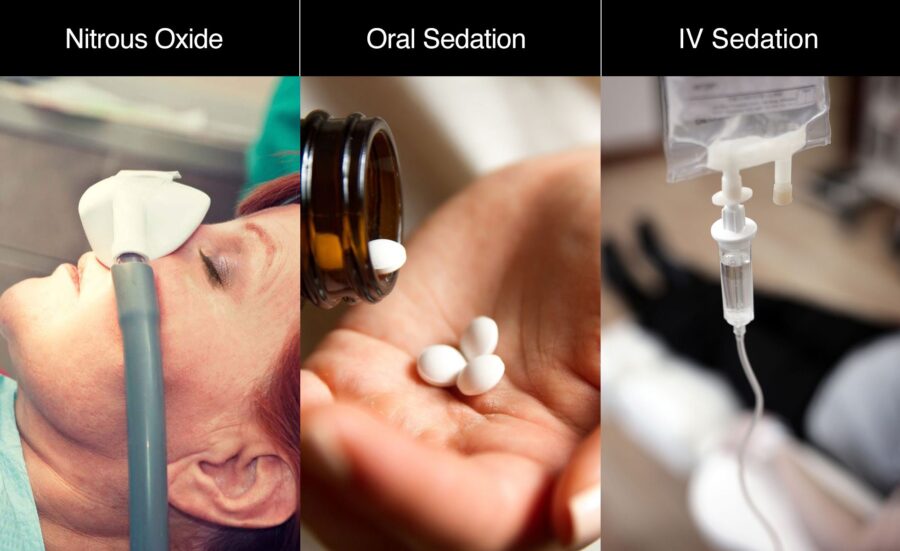
- Sterile Water: The clean, uncontaminated base upon which medical performance is performed is the sterile water in the general anesthesia setup. In order to provide a clean, sterile environment for the administration of medication and to streamline the process as a whole, Dr. Chamria emphasizes the need for sterile water.
- Sodium Chloride and Dextrose: Picture the meticulously measured components of a potion; the two main ingredients are sodium chloride and dextrose. Sodium chloride and dextrose, according to Dr. Chamria, are essential for preserving the patient’s fluid balance when general anesthesia is being administered. They aid in maintaining the patient’s physiological balance and preventing dehydration while they are unconscious.
Intricate Set-up of Anaesthesia for Dental Pain
IV Infusion Set
Overview: Throughout the anesthetic journey, the IV infusion set is the patient’s lifeline, maintaining their fluid balance. Dr. Chamria explains its importance in supplying a steady and regulated flow of fluids, avoiding dehydration, and preserving the body’s vital balance.
Goal: By maintaining hydration levels when the patient enters anaesthesia, the IV infusion system helps to maintain a stable physiological condition. It becomes an essential conduit that smoothly delivers fluids and pharmaceuticals to the patient’s system, getting the body ready for the impending medical procedure.
Nasal Oxygen Catheter
Overview: Oxygen, the elixir of life, is delivered through a nasal oxygen catheter. Dr. Chamria highlights its function in providing a continuous flow of oxygen to the patient, guaranteeing that the body maintains oxygenation during the anesthetic procedure.
Goal: The nasal oxygen catheter serves as the patient’s silent guardian, supplying oxygen to sustain important functions even as the patient drifts into unconsciousness. It is evidence of the careful preparation that went into the anesthesia setup, with the patient’s respiratory health coming first.
IV Cannula
The miracle of anesthesia manifests itself through the IV cannula. Dr. Chamria explores its importance in providing precise control over the anesthetic process by using it as the entry site for intravenous pharmaceutical administration.
The IV cannula serves as a conduit for drugs that both induce and sustain anesthesia when it is inserted into a vein. Its presence guarantees prompt and regulated medication delivery, enabling the anesthetist to customize the level of anesthesia to the individual demands of the patient.
Cannula Fixator
The IV cannula is secured in place by the cannula fixator, which functions as an anchor. Dr. Chamria emphasizes how crucial it is to maintain a steady and uninterrupted connection during the anesthetic process by preventing dislodgement or movement.
During the patient’s prolonged period of supervised unconsciousness, the cannula fixator acts as a protector, making sure that the vital connection between the IV cannula and the patient’s vein does not break. It displays the dedication to preserving the integrity of the anesthetic apparatus.
Conclusion
Anaesthesia is the invisible artist who creates a symphony of comfort and pain alleviation in the great theatre of healthcare, where life’s performances take place. Thanks to Dr. Chirag Chamria’s knowledge and perception, one may see behind the scenes and understand the intention and painstaking setup of this priceless art form. As patients, let’s honor maestros like Dr. Chamria and the entire medical staff for their commitment to making sure we’re comfortable and safe during this amazing journey through life.

